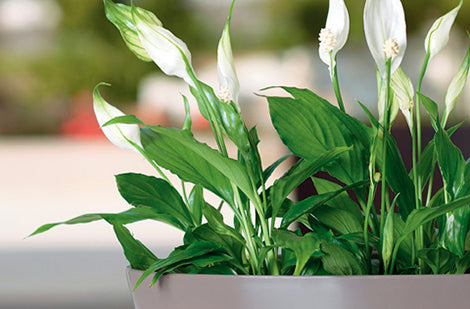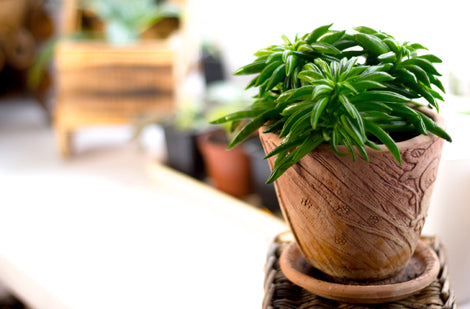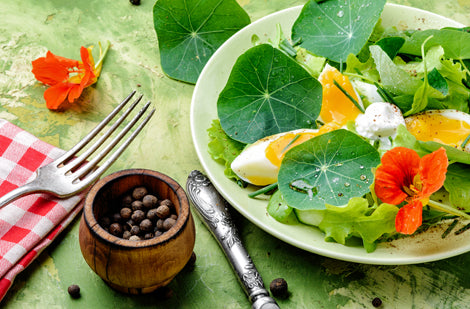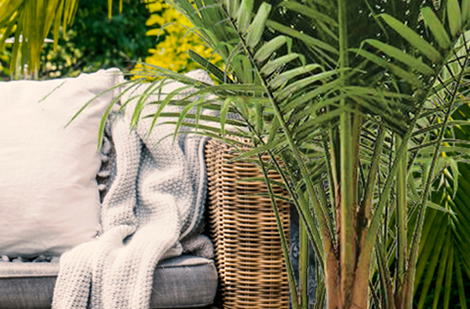Lithops
Living Stone Plant
Living Stone Plant
Exposure
- Sun
Rusticity
Bloom time
- September
- October
- November
- Unique
- Original
- Looks like a rock
- Demanding care
- Non-toxic
There is a lot to say about this very special plant. Although it is ''simple'', you need to know its growth cycle well, because watering at the wrong time can be fatal. It grows in dry, rocky places in Africa, and its rocky appearance is camouflage to protect against herbivorous pastures.
It is composed of two fleshy, semi-circular leaves with a slit in the center. The end is either flattened or domed, and has small translucent 'windows' to receive the light of the blazing sun, without burning.
In the fall, a single flower, quite large, about 2 cm, resembling a daisy, which can be yellow, white or pink, emerges from the slit. It comes out in the afternoon and closes in the evening. After flowering, the plant goes dormant to prepare to grow new leaves.
Following this, a new pair of leaves will emerge, and the old leaves will die. At this stage it is important not to water it, so after flowering no water. We start again in the spring, around April. In summer, it will go dormant, so we stop watering. No watering in July-August, unless the leaves start to shrivel, then a small amount of water can be given. We will start watering again in September, or when the crack in the center forms and enlarges, a sign that it is preparing to flower, and we start again. Basically, it's important not to water all winter and spring. We must wait until the old leaves are completely dried out.
The Lithop will need at least 4 hours of sun per day, and a few hours of shade in the afternoon.
Plant details
Dimensions
Dimensions
Characteristics
Characteristics
Habit:
Flowering colours:
- White
- Yellow
- Pink
Plant needs
Plant needs
Watering:
- Let dry completely
Maintenance:
- Demanding
Soil requirement:
- Well drained
- potting soil for succulents and cacti
Features
Features
Resistance:
- Drought
Attract:
Use:
- Pot
- Window
Attribute:
- Rock Appearance



Related articles
-

Potting House Plants: which pot to choose
Read the articleBien qu'une plante puisse passer plusieurs mois et parfois même plusieurs années dans le même pot, avec le temps ses racines envahissent tout l'espace disponible. Il devient important de choisir...
-

Moving Up a Level: Advanced Guide to Repotting ...
Read the articlePropagate your violets! Discover the simple cutting method, the secret to the perfect soil mix, and how to fight mealybugs.
-

The Complete Guide to Buying and Caring for Ind...
Read the articleBringing a touch of nature to your home with plants is a great idea! Not only do they beautify your living space, but they also help purify the air. However,...
-

Build Your Own Terrarium: The Complete, Easy Gu...
Read the articleThe terrarium is the perfect addition to your decor! Learn how to easily create your own miniature garden with our complete guide.
-

Create a garden with succulents
Read the articleLes plantes grasses n’ont pas leur pareil pour créer des arrangements à la fois impressionnants par leurs couleurs, leurs formes et leurs textures et faciles à entretenir. Qu’on les agence...
-

Houseplants to discover - Butterfly Palm or Are...
Read the articleDypsis lutescens, anciennement Chrysalidocarpus lutescens
-

Calathea: The Essential Guide to Mastering the ...
Read the articleCalathea is a stunning addition, but it's demanding! The key to its success? Humidity. Find out why tap water and dry air are its worst enemies and how to give...
-

Jade Plant (Crassula): The Easy-Care Succulent ...
Read the articleThe jade plant is a must-have! Learn all the secrets to caring for this resilient succulent that naturally grows into an elegant miniature tree.
-

Madagascar Dragon Tree: Embrace Effortless, Gra...
Read the articleAdd a modern touch to your home! The Madagascar Dragon Tree is low-maintenance, perfect for beginners, and stands out with its slender look and two-toned foliage.
-

Aspidistra: The "Cast Iron Plant" Indestructibl...
Read the articleDon't have a green thumb? The Cast Iron Plant is for you! Tolerant of shade and missed waterings, it's perfect for lobbies and offices. Learn how to maintain its leathery...
-

Embrace the Fern: The Champion of Shade and Tro...
Read the articleGot a dark corner? Ferns are your allies! They are easy to care for if you master one factor: humidity. Learn how to water them perfectly for spectacular and full...
-

-

Kalanchoe: The Secret to Massive Blooms That La...
Read the articleNeed lasting colour? The Kalanchoe blooms profusely for over two months! An easy succulent that tolerates neglect and adds a vibrant touch to your home.
-

Snake Plant: The Unkillable Houseplant, Perfect...
Read the articleThe Snake Plant is an ideal houseplant for everyone, whether you're a beginner or an experienced gardener. Its resilience, ease of maintenance, and decorative appearance make it an essential choice...
-

Edible Flowers: Top 5 for Garden and Kitchen
Read the articleOffrant une belle gamme de couleurs, de formes et de textures, les fleurs comestibles enthousiasment les amoureux de jardinage et de cuisine.
-

Tropical Flowering Plants: A touch of the exoti...
Read the articleLes plantes tropicales à fleurs ont tout pour faire tourner les têtes! Colorées, odorantes, généreuses, elles n’ont pas leur pareil pour égayer une aide de repos, un balcon, une terrasse....
-

Keep a palm tree on the terrace - why not!
Read the articleDifficile de résister à l’appel des tropiques quand le soleil et les températures clémentes se pointent le bout du nez. Rien de mieux qu’un palmier sur la terrasse ou le...
-

Bring Your Plants Indoors for Winter: The Compl...
Read the articleDon't get caught by the first frost! Prepare your outdoor plants for winter with our complete guide.
-

When and how to repot house plants
Read the articleAlthough a plant can spend several months and sometimes even several years in the same pot, over time its roots invade all the available space.
-

Choosing the best potting soil for your indoor ...
Read the articleDon't let your plants stall: learn how to choose the ideal potting mix and optimize drainage for vibrant foliage.




























